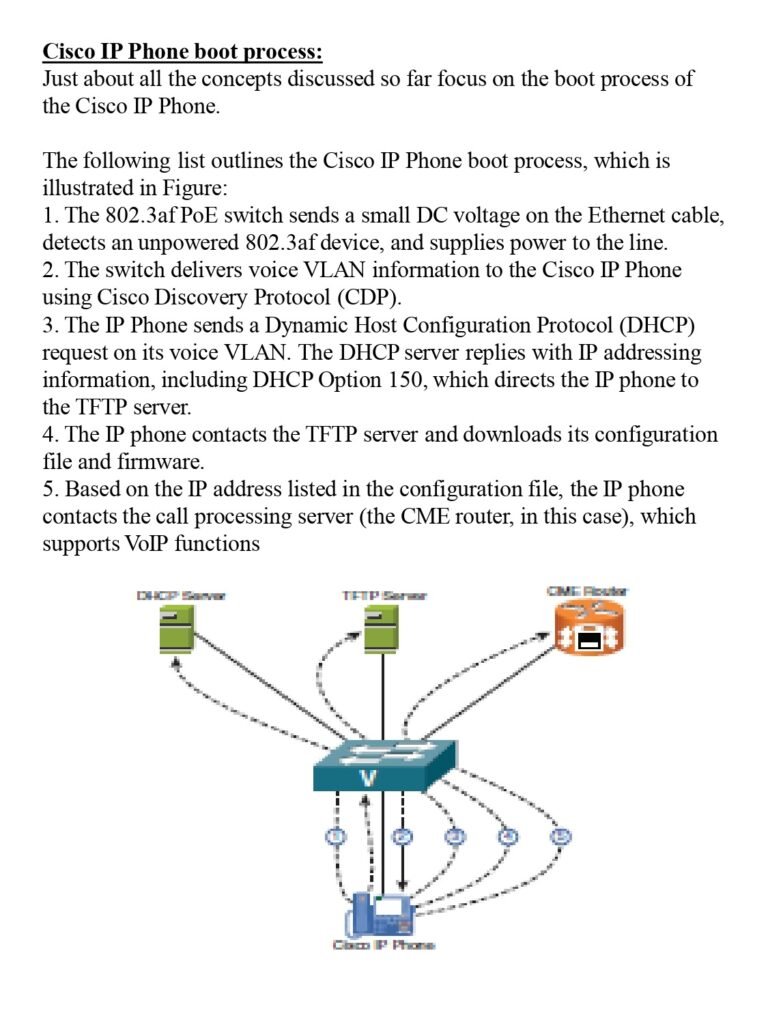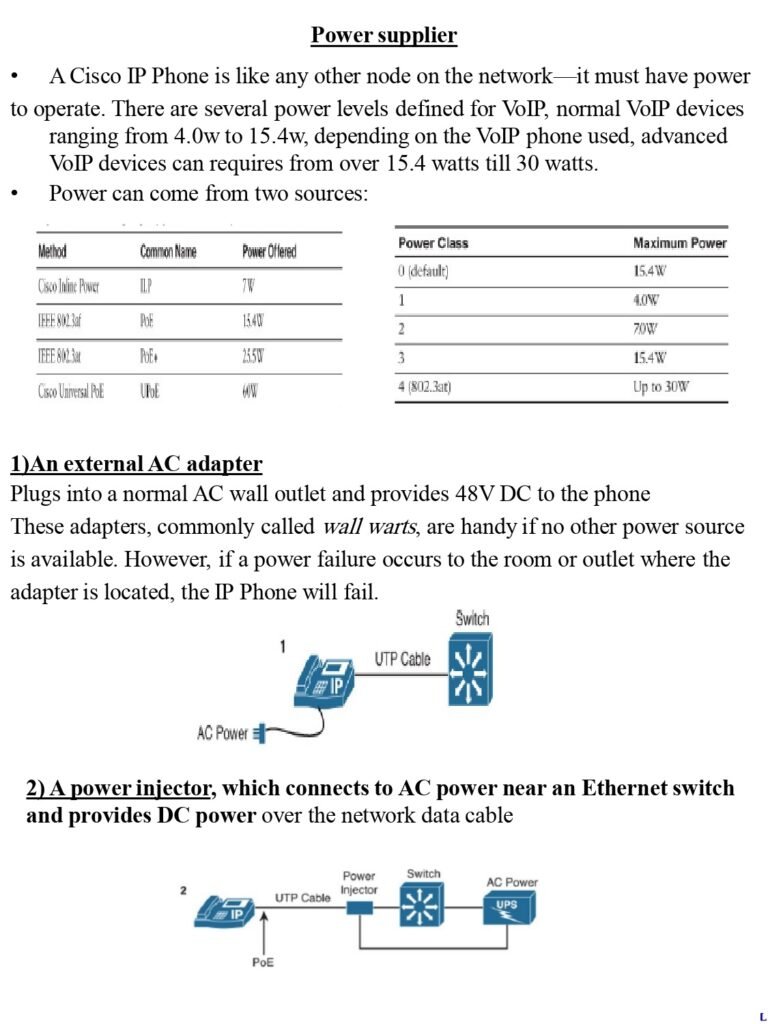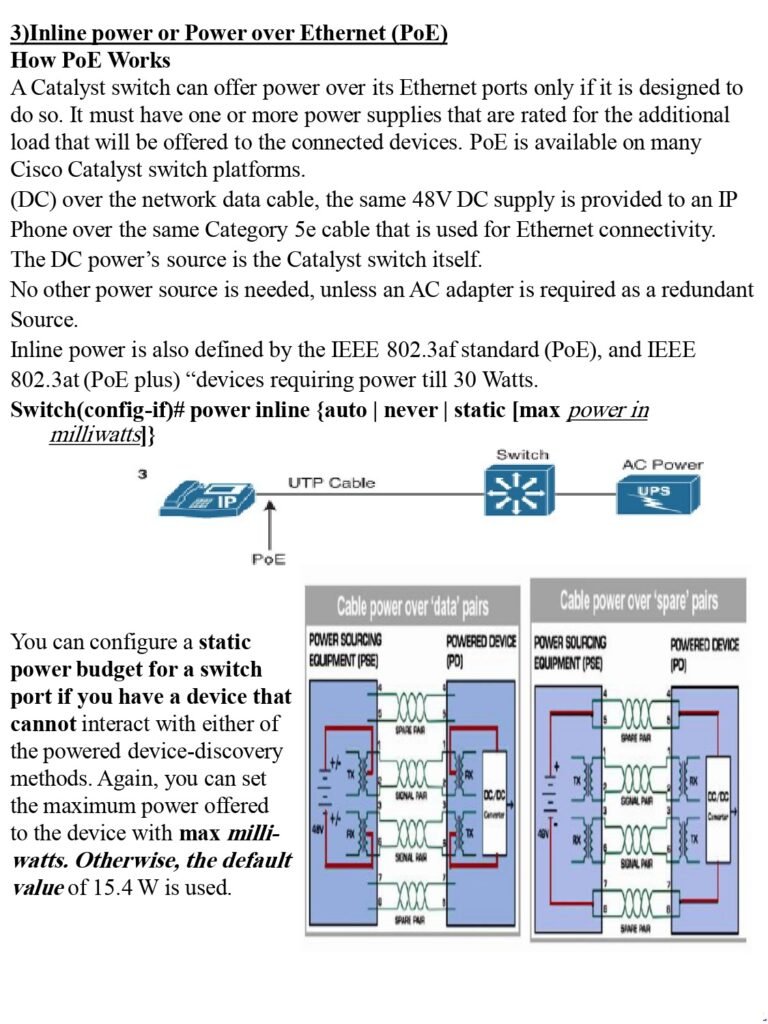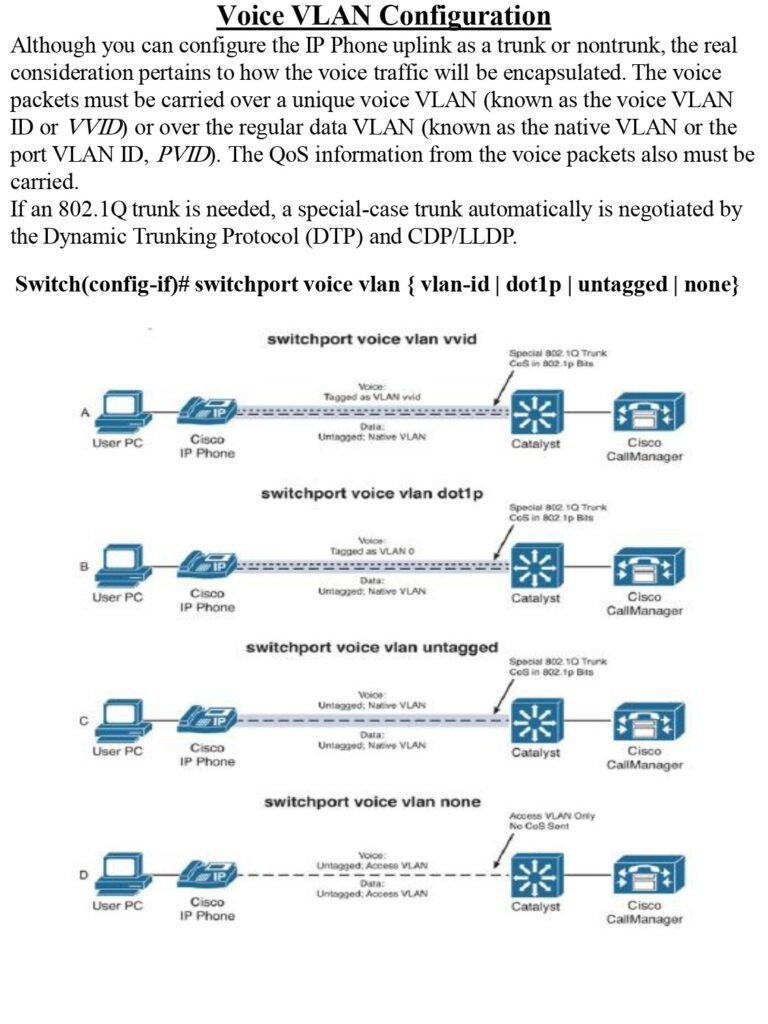Preparing switch for IP Telephony involves configuring the switch to support the requirements of an IP phone system. Some of the steps involved in preparing a switch for IP Telephony include:
- Configuring Quality of Service (QoS): QoS is essential for ensuring that voice traffic is given priority on the network. This involves configuring the switch to prioritize voice traffic and limit the bandwidth of other types of traffic.
- Configuring VLANs: IP phones require their own VLAN to separate voice traffic from data traffic. This involves creating a separate VLAN for voice traffic and configuring the switch to assign IP phones to the correct VLAN.
- Enabling Power over Ethernet (PoE): IP phones require power to operate, and PoE allows the switch to provide power to the phone through the network cable. This involves configuring the switch to support PoE and ensuring that the switch can provide enough power to support all connected IP phones.
- Configuring Port Security: To prevent unauthorized access to the network, port security can be configured to restrict access to specific devices, such as IP phones.
By properly preparing a switch for IP Telephony, network administrators can ensure that their IP phone system operates reliably and efficiently.
Preparing switch for IP Telephony Notes:-
Small and perfect Notes Discuss everything about Preparing the switch for IP Telephony. consisting of 20 pages, in a simple style.






Content: –
- Cisco IP Phone boot process
- Implementing IP Telephony
- Physical layer requirements
- Bandwidth and traffic requirements
- Security and Redundancy requirement
- Power Requirements for IP Phone devices
- VLAN Requirements
- Power Supplier
- Power over Ethernet (PoE)
- Voice Vlan
- Voice QoS
- Cisco Auto Qos VoIP
- How Auto QOS VoIP works
- Configuring Auto QoS VoIP
Prepared By: –
Eng Ahmed Nabil
Notes Format: –
To Download PDF: –
For other Network Notes PDF From here
